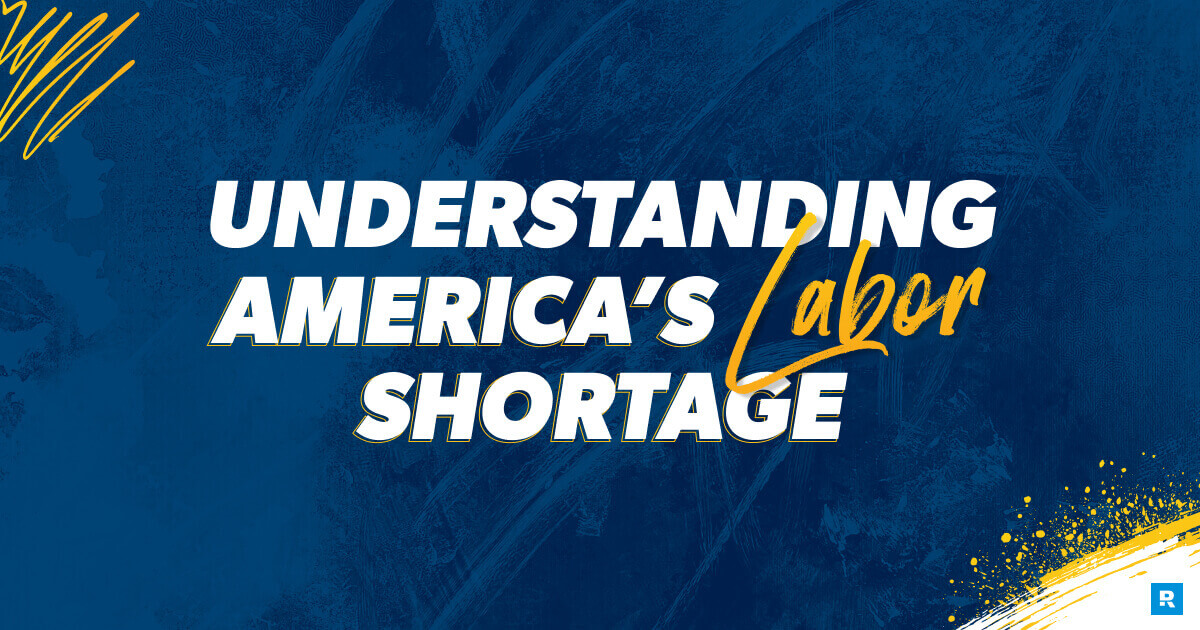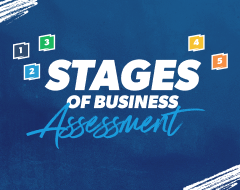America’s Labor Shortage: What Is It and What Can We Do About It?
8 Min Read | Sep 27, 2023

America is dealing with a massive labor shortage, and it’s sending shockwaves throughout the country. Thousands of U.S. businesses have cut their hours or completely closed shop because they can’t fill their open positions. And entire industries have slowed production because they simply don’t have enough workers or supplies to keep their normal pace.
All of that leads to unavoidable price squeezes on big-ticket items like cars, furniture and appliances. And don’t forget about random shortages of everyday goods like baby formula, cleaning products and even cream cheese.
As a business leader, you’re having to fight harder than ever just to attract and keep workers so you can serve your customers, stay competitive, and grow your business. In 2022, more than 50 million U.S. workers left their jobs—the most ever recorded in the history of the Job Openings and Labor Turnover survey.1 Economists have slapped slick labels like “quiet quitting” and “the Great Resignation” on the disruption. But let’s be real—there’s nothing slick about America’s current state of work.
Related article: Small-Business Labor Crisis Report 2023
If you’re tired and discouraged by the chaos, we’re with you. It’s a lot. But you can build a strong and focused business—even when chaos is all around you. We’ll get into the specifics of how in just a minute. But first, let’s get answers to these three questions:
What Is a Labor Shortage (and How Does It Affect the Supply Chain)?
Why Is There a Worker Shortage?
What Can I Do About the Labor Crisis?
What Is a Labor Shortage (and How Does It Affect the Supply Chain)?
There’s nothing mysterious about what a labor shortage is. Basically, whenever you have more job openings than working-age people to fill them, you have a labor shortage. That’s exactly what’s happening in the United States today, and the numbers are alarming.
1. We have more open jobs than people to fill them. In fact, we have about 1.7 open jobs for every person currently looking for work. That’s 4.7 million more positions available than working-age people to fill them.2
2. The number of people who could work but have opted out of the workforce is at a historic high. The labor force participation (LFP) rate tracks working-age people who are either working or actively looking for work. America’s current LFP rate is just 62.5%—the lowest it’s been in nearly 50 years.3
We’re short on teachers, restaurant servers and cooks, assembly line workers, nurses, first responders, hotel staff, and on and on. Some of the hardest-hit industries include:
- Transportation (truck drivers, warehouse personnel, skilled technicians, public transit workers)
- Accommodation and food (housekeeping, front desk clerks, food preparers and servers)
- Manufacturing (machine operators, assembly line workers, technicians)
- Agriculture (meat and dairy farmers, fruit and vegetable growers)
- Health care (technicians, sonographers, dental hygienists, physical therapists)
- Retail (cashiers, stockers, customer service and sales associates)
Ready to Level Up Your Business?
Find out your Stage of Business with our free assessment and get free resources to help you level up by focusing on the right things at the right time.
What’s the Labor Shortage – Supply Chain Connection?
Supply chain issues come and go with bad crops, natural disasters and global trade blocks. But our current lack of laborers—especially in transportation, agriculture and manufacturing—has taken supply chain issues to a new level. When you don’t have workers to produce, process and transport goods, you don’t have supplies to stock stores and warehouses and to keep businesses running smoothly. It’s that simple.
Why Is There a Worker Shortage?
The COVID-19 pandemic set a lot of weirdness in motion. Business as usual stopped as government and health officials tried to get a handle on the global health crisis. And then we spiraled as a nation. People exited the workforce in droves for all kinds of reasons—fear of sickness, actual illness or to deal with child and other family care issues. But now there’s a bigger issue: They haven’t returned.
Every business goes through five distinct stages. Find out which stage your business is in with our free assessment.
Since the pandemic, in spite of low unemployment and high job growth, we have some of the lowest workforce participation rates our nation has seen since the 1970s. And again, the reasons vary. Some people opted out of the job market to get new skills and training, stay home with their kids, or make health and well-being a higher priority. Others tucked away enough enhanced unemployment benefits and stimulus checks from Uncle Sam during the shutdown that they’re not in a rush to reenter the workforce.
But still others—those in the prime working ages of 25–54—have left the workforce and completely stopped looking for work. That unexpected flight points to a deeper crisis.
Nicholas Eberstadt, economist and author of Men Without Work, sees this as a big red flag for our nation. “People in their prime working age are sitting on the sidelines of the economy,” he explained. “Work is readily available, but they’re uninterested in taking it.”
In his research, Nicholas analyzed time-use surveys, disability program participation trends, and workforce data going back to the 1940s. The results showed what he calls a “will gap,” where able-bodied Americans are choosing not to help out at home, serve their community, or get a job for reasons he’s still investigating.
One of those reasons, it seems, is that Americans are becoming allergic to doing hard things. Professor and bestselling author Michael Easter writes about this problem in his book The Comfort Crisis. “Ninety-eight percent of people choose short-term comfort over long-term growth,” Easter said. “We don’t know how to do hard things.”
Related article: What Is Work Ethic (and How to Build a Strong One in Your Team)?
What kinds of hard things? Easter’s research shows we’re at our best after embracing experiences similar to those our ancient ancestors faced, like working and exercising in the heat, being alone sometimes, letting our minds rest, staying active and fit into old age, and eating real, unprocessed and unrefined food—preferably even food we’ve hunted and gathered ourselves.
Accepting challenges like these could protect us from physical and psychological problems like obesity, heart disease, cancers, diabetes, depression and anxiety, along with even more fundamental issues like a lack of meaning and purpose.
But our culture today encourages us to avoid hard situations. So what do we choose instead? Ease and entertainment. We scroll on our phones, play Call of Duty, and take the edge off life with drugs and alcohol. The results?
- Physically, people are addicted to comfort.
- Mentally and emotionally, people are fragile.
- Spiritually, people are disconnected from their purpose.
What Can I Do About the Labor Crisis?
Even in the best of times, owning, building and running a small business is challenging. And leading through crazy times like these is just freaking hard. But hard work is in your blood. You know it’s a waste of time to wait for someone else to create a policy or program that might, sort of, maybe help a handful of small businesses. If change is going to happen, it’s got to start with you.
And here’s the good news: As far as your business is concerned, you get to call your own shots and kick the labor crisis to the curb. Let’s talk about how.
- Be humble. You don’t have to know and do everything yourself. Build a community with other business leaders you respect. Share your wisdom, perspective and fresh ideas with each other so you can all grow your businesses and overcome challenges.
- Slow your growth. If you’ve set aggressive revenue or team growth goals, reevaluate them. Ultimately, you'll grow stronger and better when you take the time to get the right people and culture in place. If it takes longer to build your business and reach your goals, that’s okay. Slow and steady wins the race.
Related article: What Is Company Culture? - Don’t rush the hiring process. You want thoroughbreds on your team who will give their best, not donkeys looking to take all they can from you. Implement hiring solutions that will help you find top performers with excellent character.
Related article: How to Hire Employees: The 12 Components to a Good Hire - Be a leader people want to work for. You won’t attract and keep top people by bossing your team around instead of serving them. But you’ll never go wrong by treating others the way you want to be treated and inviting them to be part of a mission that’s bigger than them.
Related articles:
What Is Leadership?
Employee Empowerment: Why It Matters and 12 Ways to Empower Your Team
What’s Next: Develop as a Leader
You can start taking those steps today—and you can learn about even more tactical solutions for how to hire employees and lead through these tough times—when you join EntreLeadership Elite. Your Elite membership includes e-coaching, a Weekly Report tool, and other digital resources to help you lead your team, grow your business, and create a world-class culture. Check out Elite today.
Frequently Asked Questions
-
What is a labor shortage?
-
A labor shortage is when there are more open job positions than people to fill them.
-
Is America facing a labor shortage?
-
Yes. 4.7 million more job positions are available than people to fill them in the United States, and about 1.7 open jobs exist per unemployed worker.4
-
How many Americans aren’t working?
-
The U.S. labor force participation rate in February 2023 was 62.5%, the lowest it’s been in nearly 50 years.5 That means 37.5% of the working-age population isn’t working or actively looking for work.


